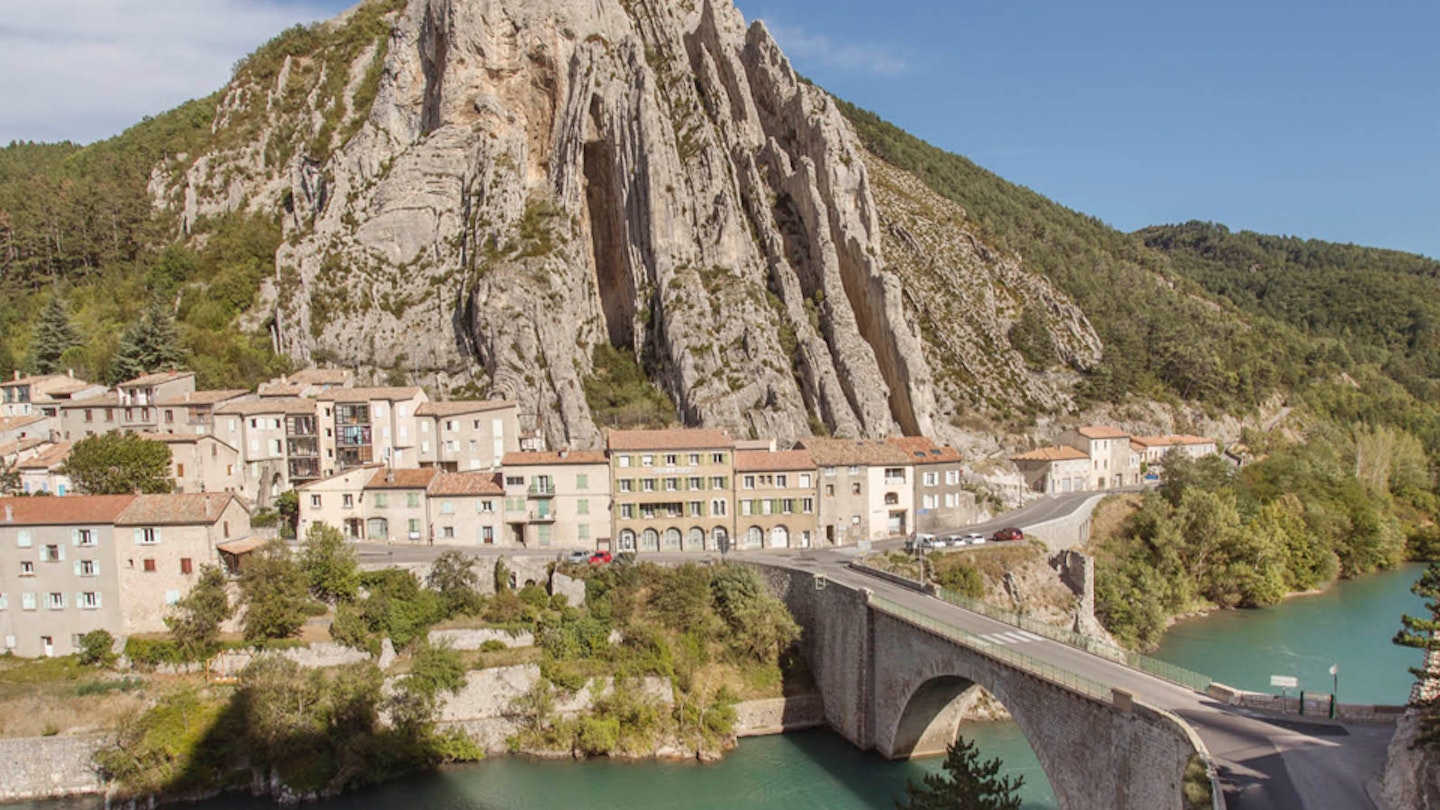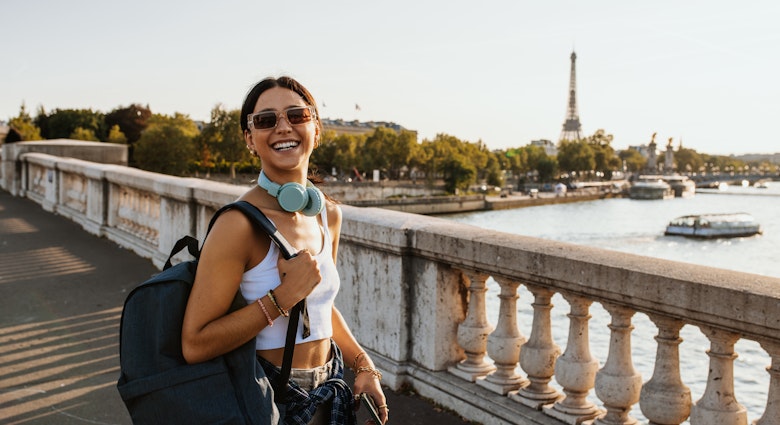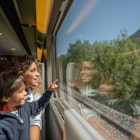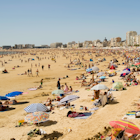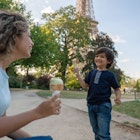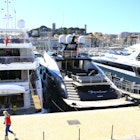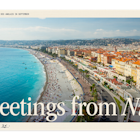A legendary road follows the emperor’s last epic journey from the Côte d’Azur to the Alps, through landscapes that remain off the beaten track today.
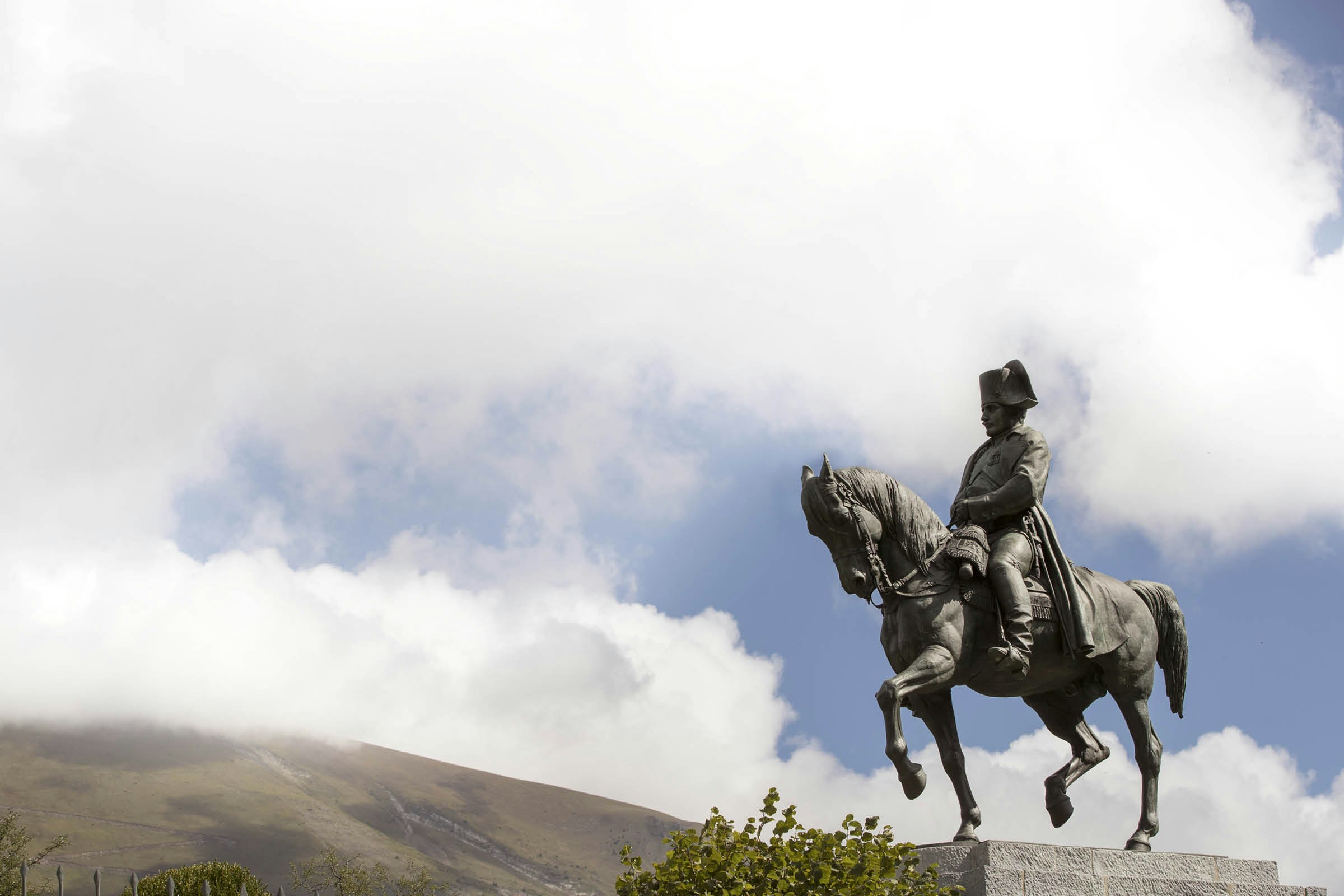
It’s dawn on the seafront in Cannes, and the water is still enough that the day’s first swimmers leave long wakes. Behind the palm trees along the Boulevard de la Croisette, most hotel room curtains have yet to open. But just one street inland, there’s a reminder of a morning when everyone on the beach would have been up at military time. On the side wall of a church, under a stone eagle with wings outstretched, a message is spelled out: ‘HERE on the dunes beside the former chapel of Notre Dame de Bon Voyage, NAPOLEON, returned from the island of Elba, set up camp for the night of 1–2 March 1815 before dashing to Paris by the perilous Alpine road.’
It’s this adventure that I’ve come to the French Riviera to retrace, following a road now celebrated as ‘la Route Napoléon’. These days it’s a drive of around six hours, running for just over 200 miles as far as the Alpine city of Grenoble. It took Napoleon and his men seven days to cover that distance, going at great haste. Unlike him, I am in no rush, and want to leave plenty of time for detours and digressions. Seven days feels right for me, too.

Elba is a little far – 170 miles away – to begin this trip in Napoleonic fashion, so I take a short ferry ride to a smaller island, Sainte-Marguerite. It was once a fortress and prison, but today is largely grown over by pines. I look around the cell that housed an earlier figure from French history, the Man in the Iron Mask, then emerge into the radiant Riviera sun to get the view from the battlements. Cannes is to the left, across a wide bay dotted with sailing boats. And to the right, Golfe-Juan, where Napoleon stepped ashore with just over a thousand men on 1 March 1815, after evading the British fleet. He had been exiled on Elba for less than a year when he decided to return to France and force out the restored monarchy under Louis XVIII. To reach Paris, however, he would have to avoid the valley of the Rhône – the quickest route, but one dotted with garrison towns loyal to the king. Instead, he formed a plan to take much rougher roads through the mountains, until he had enough momentum to seize Grenoble and then march on the capital.
I take an afternoon ferry back to Cannes, where a dock makes disembarking easier than in Napoleon’s time. A game of pétanque is in progress by the marina. In 1815, Cannes was a small fishing village; the old encampment to the side has since been overtaken by hotels and apartment buildings, each competing for sea views. I follow the villa-covered coast round to Golfe-Juan, a more low-key slice of the Riviera; it, too, barely existed two centuries ago. The idea of anyone other than fishermen wanting to live as close to the sea as possible – so exposed to attack – would have astonished Napoleon’s contemporaries. Standing at the sign that announces the official start of the Route Napoléon, I watch a Citroën 2CV trundle past: a momentary pairing of Gallic icons. It should be a signal to leave the warmth of the coast behind, and yet I’m reluctant to speed away on the route just yet.
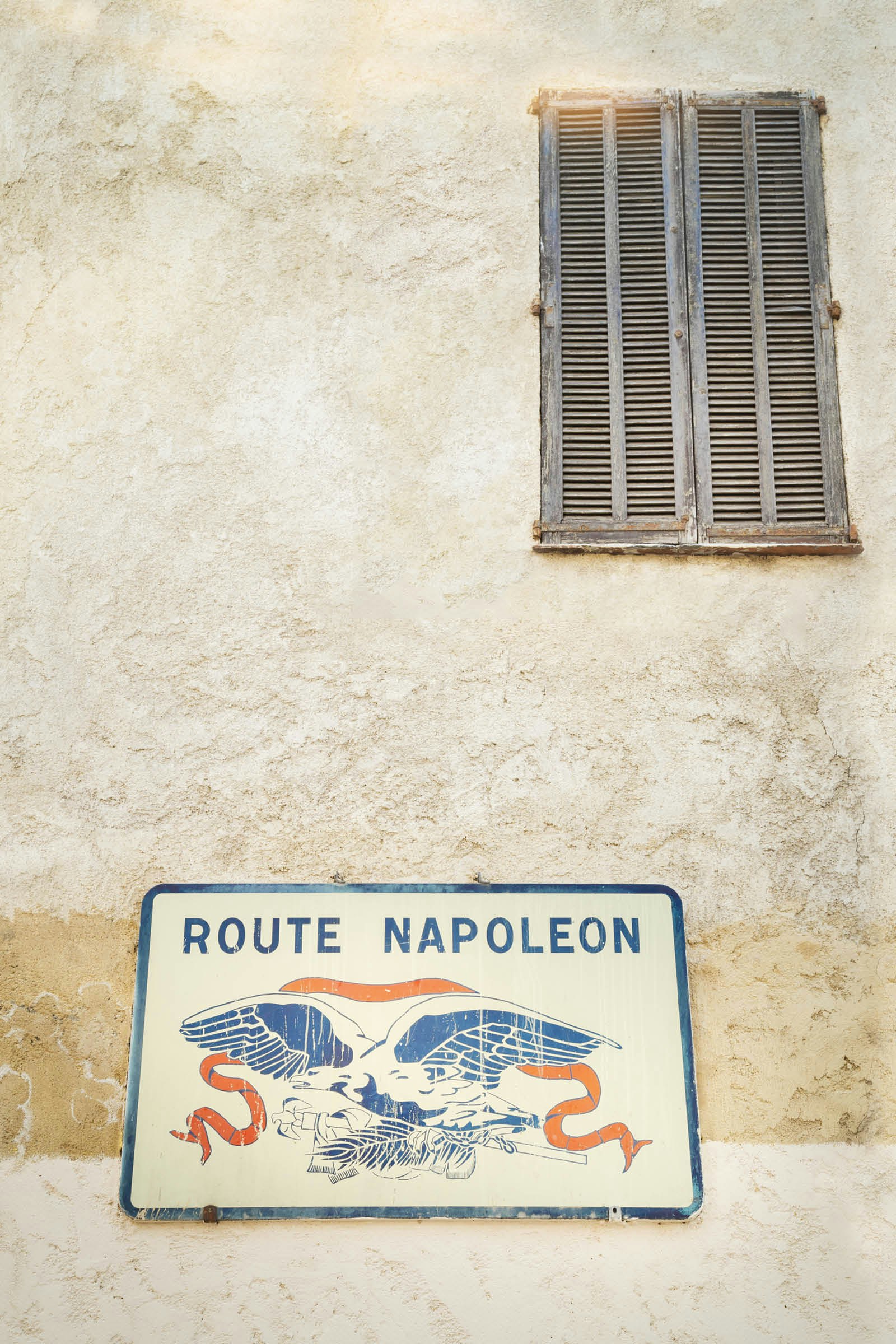
The hilltop towns inland provide excuses to linger. In the market square of Vallauris stands Man with a Sheep – a rare statue by Picasso in an open setting. This old pottery-making town brought inspiration late in life to the exiled Spanish artist, who turned his talent towards ceramics. ‘It was the first time we had a relationship between traditional potters and a contemporary artist,’ says Yves Peltier, director of the Madoura studio where Picasso worked. ‘Now people have the opportunity to see the pieces in the atmosphere they were born.’ The simple stone walls of the studio and the grander surrounds of the town’s château-turned-museum provide contrasting settings for Picasso’s artistic imprint in Vallauris. But perhaps he had an indirect effect on the town as well: even after its main business of making utilitarian cookware moved away, a few kilns in town, such as Bleu d’Argile, keep the artisan tradition alive.
Picasso died in 1973, aged 91, just a little further up the Route Napoléon in Mougins. The village’s streets curl round the hilltop like a snail shell. Its Musée d’Art Classique juxtaposes art from the modern and ancient worlds in surprising ways; the Roman helmets and Egyptian mummy-cases could almost be a tribute to the military commander who stood at the foot of the pyramids. Napoleon’s growing band had a breather just outside the town, on the grounds of what is now Le Mas Candille. Its Michelin-starred cuisine goes far beyond the bread and soup that would have fuelled a day’s march, but the dining terrace gives a clear line of sight to Grasse: the most significant town Napoleon had yet to enter.
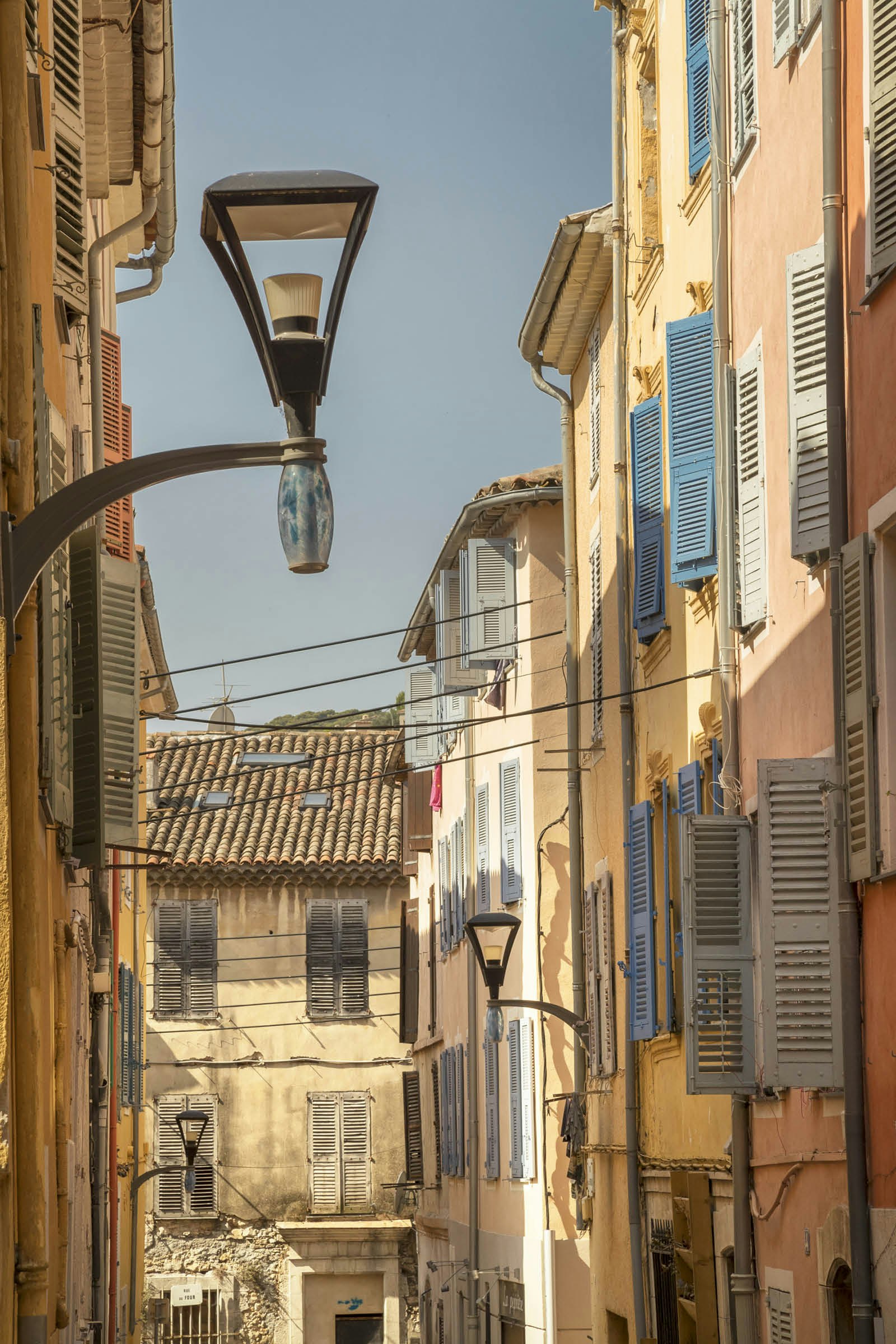
Two of Grasse’s present claims to fame were already established in his time. It was home to the painter Jean-Honoré Fragonard, famous for his scenes of pre-revolutionary aristocrats frolicking in idyllic countryside. And from a side-business of growing and distilling flowers to disguise the smell of its main product – leather gloves – Grasse emerged as the ‘perfume capital of the world’.
The fragrant notes of the area draw plenty of people from abroad. Francesco Barberio, from Italy, is in his second year working in the gardens of the Musée International de la Parfumerie. Though lavender is the flower that outsiders most associate with Provence, the signature scents of Grasse are jasmine and tuberose. ‘You should come in the early morning or evening when the aroma is even stronger,’ says Francesco, picking out some of the hundred varieties of jasmine for comparison. ‘It’s great to work outdoors – I love being in symbiosis with nature.’
To try my hand at the final stage in the perfume process, I head to the Galimard studio, where Finnish-born Kirsti Kanervo takes budding parfumiers through the stages of building a bottle of scent. Starting with a ‘perfume organ’ (in the church sense of the word) of 127 bottles, we pick base notes first, then the heart and finally the peak. ‘The peak notes are the opening of the perfume, but they blow away after 15 minutes,’ Kirsti says. ‘The heart notes are the most important – you keep them for many hours. When people say “you smell good” it’s the heart notes they’re describing.’ My creation leads with scents including green tea, bergamot and pineapple, developing into bamboo, wild jasmine, ginger, white musk and sandalwood. ‘Interesting,’ says Kirsti. ‘You were more classical when you started, but then you turned to the modern.’
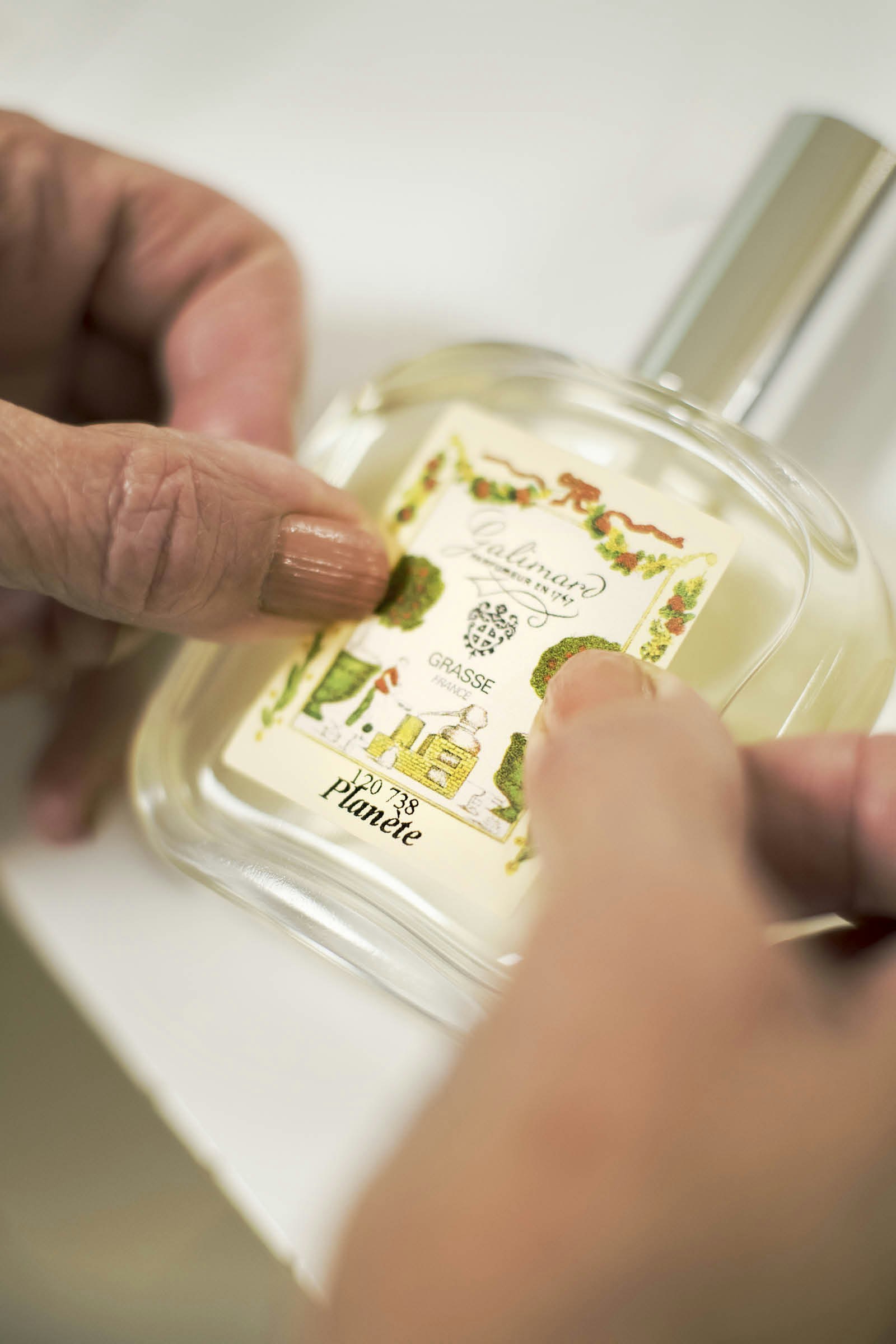
I’m not sure that even Grasse’s best efforts could have covered the odour of a small army under forced march. The Route Napoléon takes on an epic quality for the first time as it leaves town, and zigzags up into the mountains. Not in tidy little hairpin bends, but in big, impatient strokes. No longer lost amid Riviera development, the road is now an obvious line on the map. After half an hour, the playful, perma-tanned coast seems like an age away, replaced by a hardscrabble landscape of rock, oak forest and sparse villages. I stop at the entrance to Escragnolles to retrace Napoleon’s steps along one of the few surviving stretches of the original stone road, watched by some enormous black-and-tan goats.
The road has its moments of virtuoso engineering up in the mountains, but they seem tame in comparison to the Route des Crêtes – the biggest detour I will take from Napoleon’s path. From the town of Castellane, I follow the blue-green Verdon River downstream as the cliffs either side rise ever higher. The Gorges du Verdon is Europe’s closest answer to the Grand Canyon, and the winding road hugs its north rim closely. Next to one of the stopping points, a group of rock climbers begins their descent down a limestone wall almost half a mile above the valley floor.
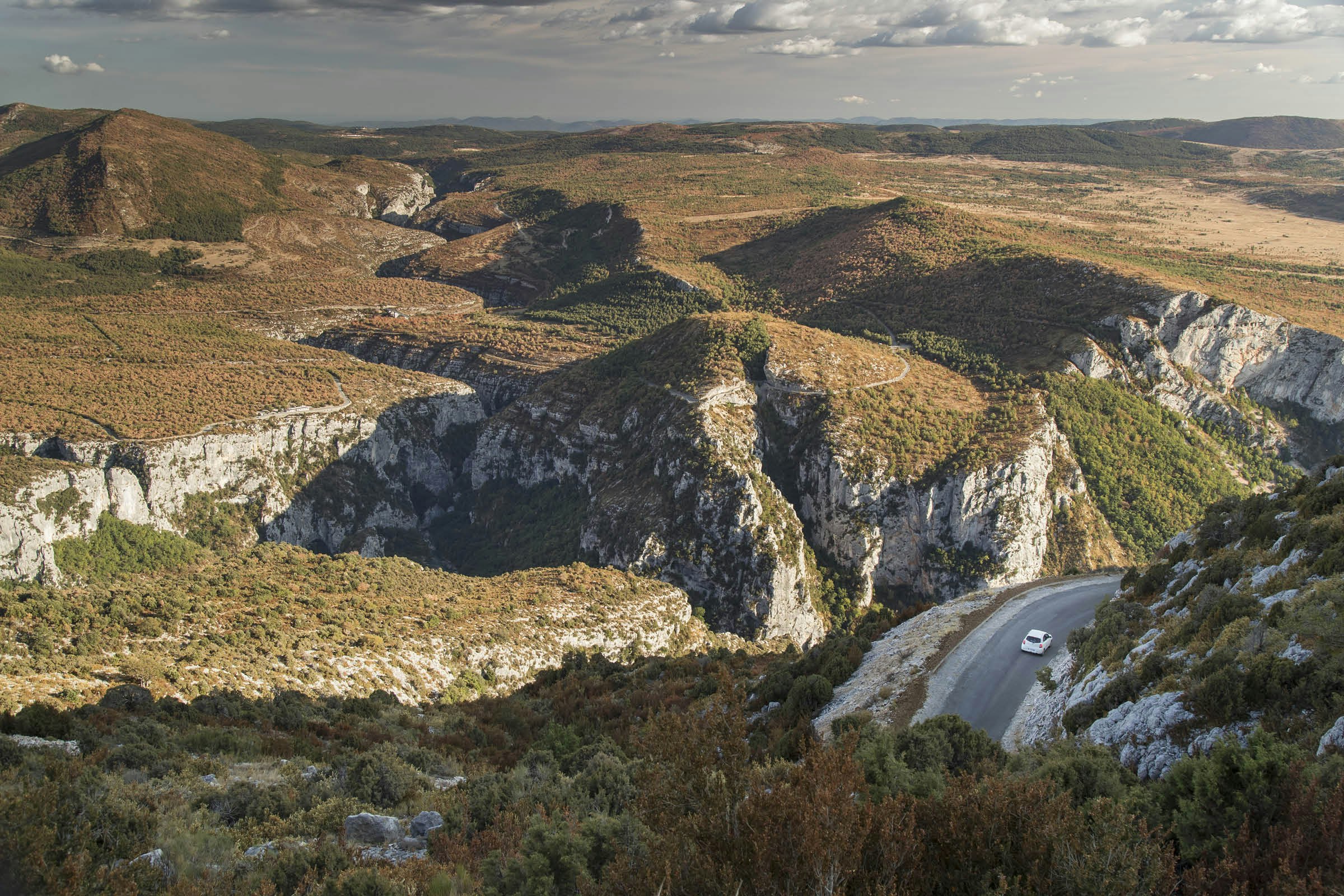
Returning to Castellane to rejoin the Route Napoléon, the scenery continues to invite Wild West comparisons. After my unorthodox departure to see the gorges, I decide to atone by sticking more closely to Napoleonic footsteps than the signposted route does. Four miles on from Barrême, where the army spent their third night on French soil, I leave the N85 and take the narrower D20 up to the Col du Corobin. Few cars pass this way; it’s a while before I meet another vehicle – a support van for cyclists tackling this rare stage on the Tour de France. Descending towards Digne-les-Bains through a valley that could be in an American national park, the car radio plays a soundtrack of Ennio Morricone’s themes from legendary spaghetti westerns.
Napoleon had to emerge from the mountains to tackle the suspected royalist choke-point of Sisteron: at the spot where the Durance River forces through a spine of rock, a citadel stands guard at the old northern gateway of Provence. He entered without a fight, but moved on quickly. In the province of the Dauphiné to the north he thought he could count on a surer welcome.
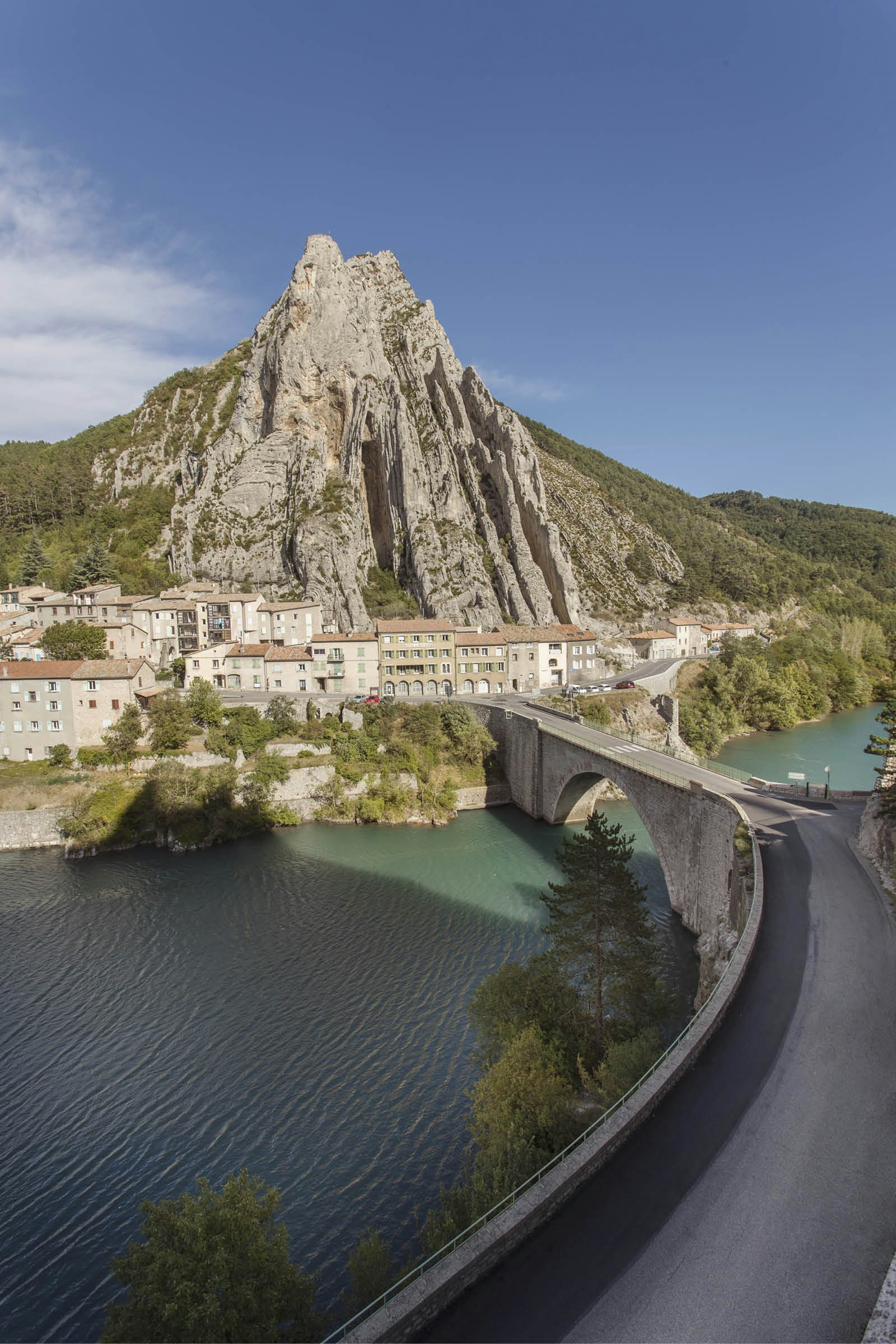
Between Sisteron and Gap, the road crosses a broad, flat bowl of fruit orchards seemingly ringed by mountains on all sides. Napoleon made his swiftest passage of the whole journey here, and likewise I am back on the autoroute for the first time since day one. But on leaving Gap, a sign announces a layby for putting on snow-chains. The houses begin to take on an Alpine look, not in the Provençal way, but in the ski-poles and fondue sense. There was snow on the road when Napoleon travelled it in early March, and he must have been glad of warm lodgings in the village of Corps for his last night before the crucial test at Grenoble. Perhaps his band got some liquid warmth too: I stop by the Salettina distillery, whose owner Jean-François Manent produces génépi – a pale-green spirit and traditional Alpine cure-all flavoured with 20 different mountain plants. ‘I use spring water that comes from under the sanctuary of Our Lady of La Salette,’ says Jean-François. ‘It’s blessed!’
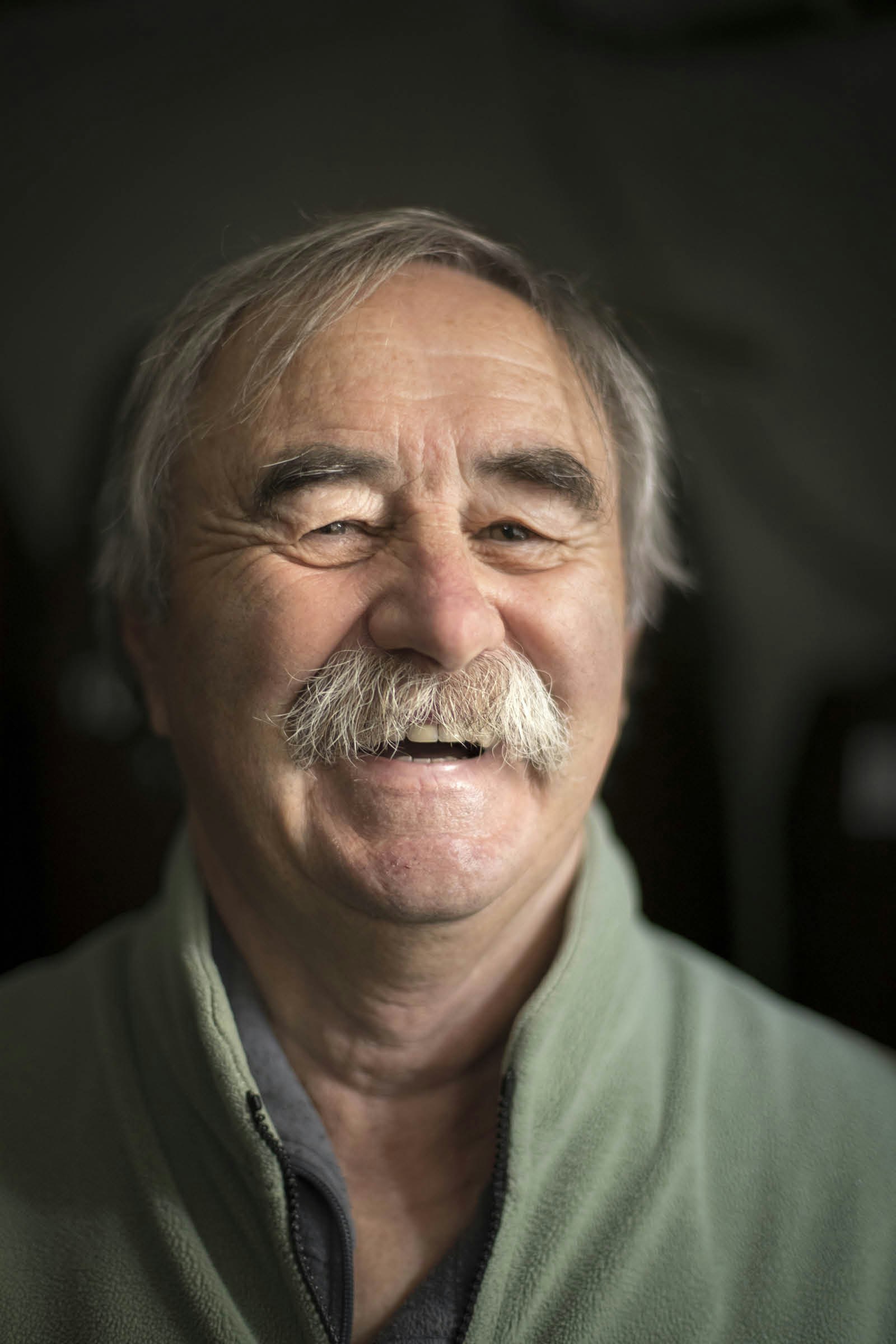
Napoleon was 12 miles from Grenoble when the king’s soldiers at last stood in his path, before the village of Laffrey. A fight here was unlikely to go the ex-emperor’s way. Napoleon walked up to the opposing line of rifles, opened his waistcoat and challenged anyone to shoot him. The royalist general’s aide-de-camp shouted ‘Fire!’ but the general himself hesitated. And then the threat melted away, as the king’s soldiers went over to Napoleon en masse.
His entry into Grenoble was triumphant: he had never been there before as emperor, and in his two nights in the city, he had to make constant trips to the window of his inn to satisfy the crowds with a wave. My last few miles lead through the suburbs that have grown since 1815, so in an effort to end the trip with some visual drama, I take a cable-car up to the mountaintop Bastille fortress. Joggers who have made the same arduous ascent stop for a breather on a terrace that surveys all of the city. Ruler-straight avenues radiate out from its centuries-old core in a grand geometry the soldier-emperor would surely have approved of.
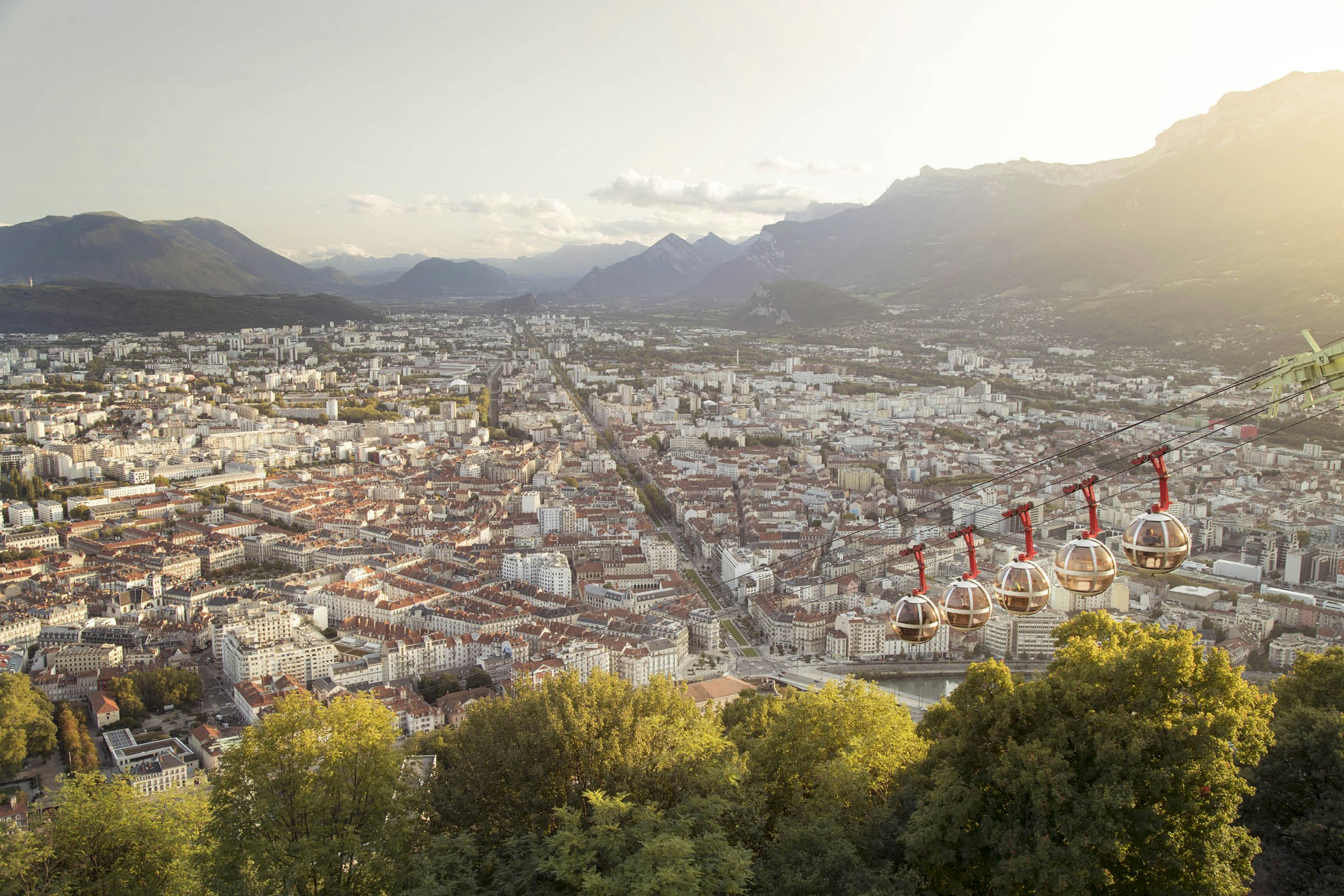
Grenoble was not the end of Napoleon’s own journey. That came 12 days later, when he entered Paris to be acclaimed as emperor again. Or three months after that, when he was conclusively defeated at the Battle of Waterloo. Or in 1821, when he died in his final, permanent exile – 4,000 miles away on St Helena. The Route Napoléon was the last roll of the dice by an inveterate gambler. He had led more daunting expeditions than this before: to Egypt, to Russia. But there’s an appealing simplicity in following these seven days, when Napoleon’s challenge was to win back the country he had first come to know.
Travel the Route Napoléon
To drive the Route Napoléon in the direction the man himself travelled, with the mountains not the sea as your final reward, it’s best to fly into Nice and out of Grenoble or Lyon. You’ll have to pay an add-on to your car rental fee, but won’t need to loop back. Nice Côte d’Azur airport serves many European destinations and a few further afield. Grenoble Alpes–Isère Airport largely deals with winter skiing traffic only. Otherwise, Lyon–Saint Exupéry Airport is just over an hour from Grenoble (compared to 35 minutes for the city’s own airport) and has a wider year-round choice of flights. At route-napoleon.com you can find a detailed bilingual brochure setting out the route and many attractions along the way.
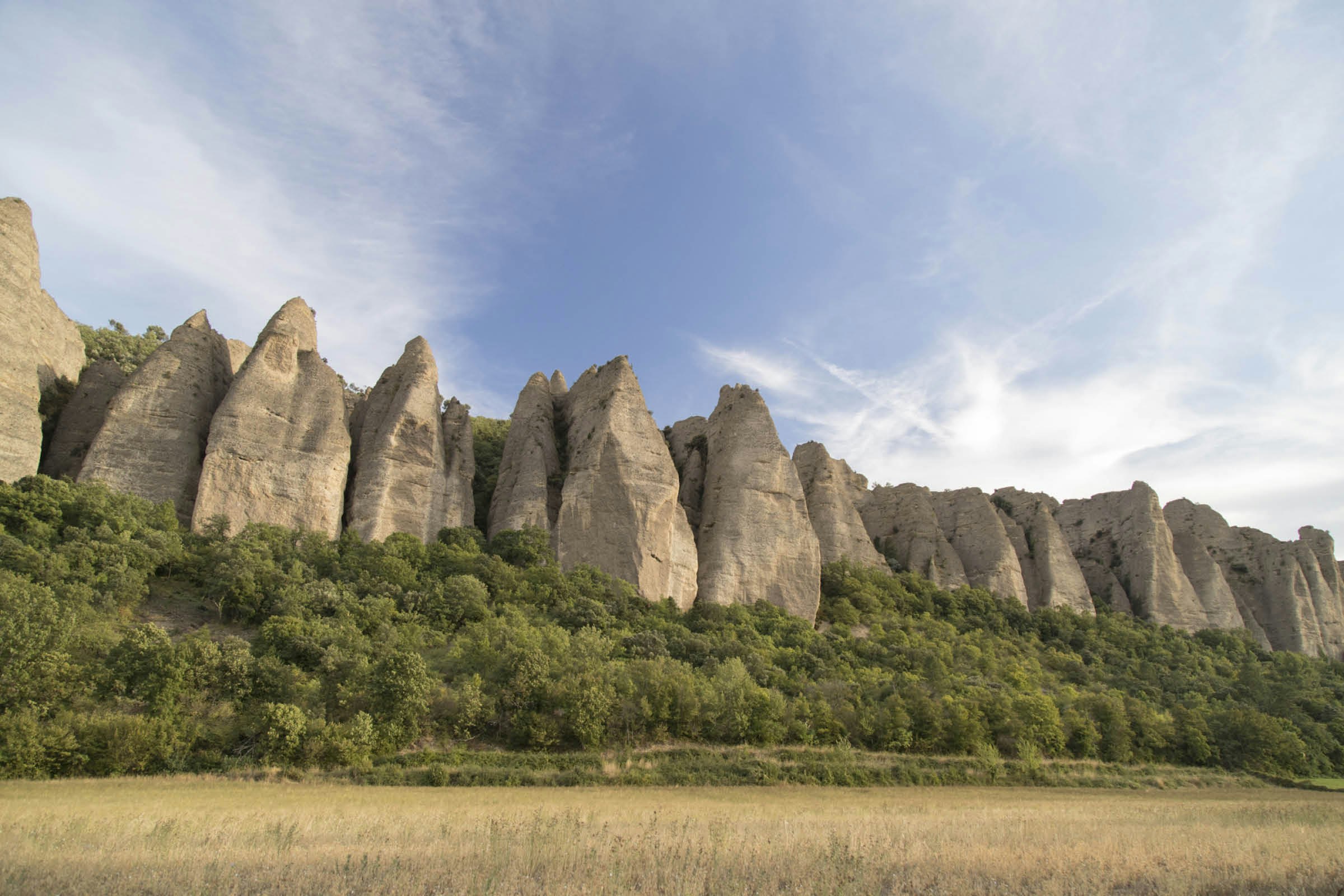
Plan your route
1. Pick up your car at Nice Airport and drive for 20–30 minutes to Golfe-Juan, the official start of the Route Napoléon. Blanc Sable Hôtel has a relaxed, seaside vibe with whitewashed interiors. Within sight of the route’s start sign, Le Bistrot du Port serves creative fish and seafood dishes.
2. Just west along the coast is Cannes. Villa Claudia, built in 1872, has contemporary interiors including photos from the film world. Ferries to Île Sainte-Marguerite take 15 minutes.
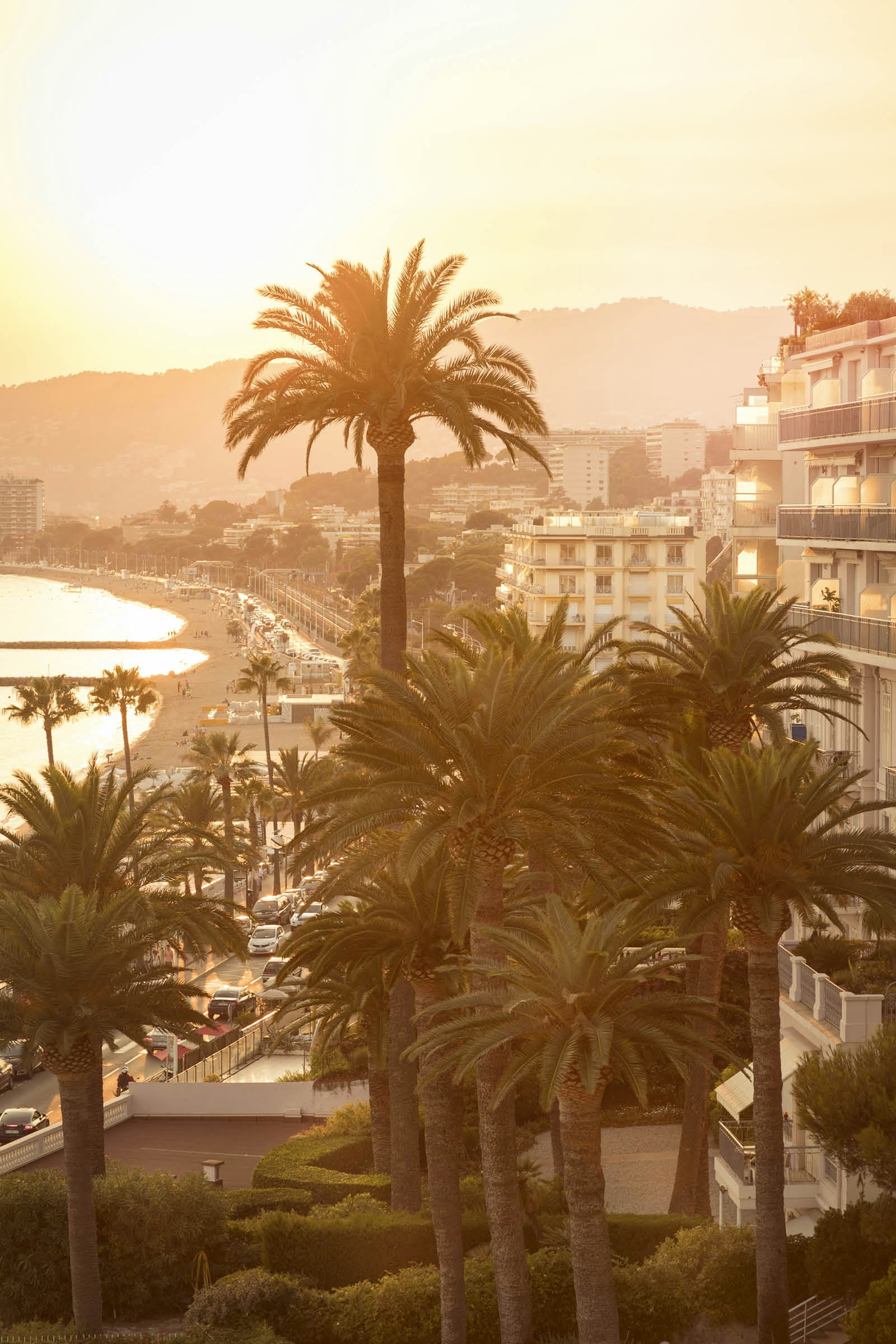
3. Next, explore around Vallauris and Mougins on the trail of Picasso and other artists. In Vallauris, Le Café du Coin has a Mediterranean-influenced menu with dishes such as pollack fillet in a saffron and mussel sauce. For a special meal, book at Michelin-starred Le Candille, whose terrace looks out towards Grasse. The nearby Manoir de l’Etang is a quiet retreat in old Provençal style.
4. On your way to Grasse, fill your nostrils with scents at the Jardins du Musée International de la Parfumerie, or have a go at creating your own perfume to take home at Galimard’s studio. Le Château de Taulane is an hour from Grasse along the first rugged part of the Route Napoléon. Even if you’re no golfer, the 18-hole grounds of this 18th-century château form a grand setting in the Alpine.
5. Half an hour on is Castellane. If you only make one detour from the route, be sure to break the journey here to see the Gorges du Verdon. La Palud-sur-Verdon is 45 minutes west, and its Hôtel & Spa des Gorges du Verdon makes a good base, with bright, modern rooms. Leave masses of time for photo stops along the 15-mile Route des Crêtes. Part of the road is clockwise-only.
6. From Castellane, it’s an hour to Digne-les-Bains through some more mountainous stretches of the road. In a garden just outside town, Villa Gaia has bags of old-world charm. Break the two-hour drive to Corps with a short detour to see rock formations at Les Mées and with a stop at dramatically sited Sisteron. Stop by the Salettina distillery in Corps for a génépi.
7. From Corps it’s 45 minutes to Laffrey, the site of Napoleon’s moment of destiny, then 35 minutes to Grenoble. Fill up at Café de la Table Ronde, already established in Napoleon’s day or amid wrap-around views at Le Téléférique, at the top of the Bastille cable car. West of the historic centre, Royal Hôtel has clean-lined rooms in a 19th-century townhouse.
Rory Goulding travelled on the Route Napoléon with support from Atout France. Lonely Planet contributors do no accept freebies in exchange for positive coverage.
